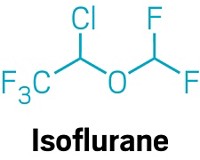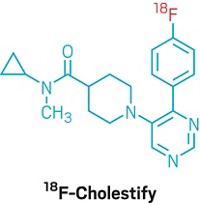Advertisement
Grab your lab coat. Let's get started
Welcome!
Welcome!
Create an account below to get 6 C&EN articles per month, receive newsletters and more - all free.
It seems this is your first time logging in online. Please enter the following information to continue.
As an ACS member you automatically get access to this site. All we need is few more details to create your reading experience.
Not you? Sign in with a different account.
Not you? Sign in with a different account.
ERROR 1
ERROR 1
ERROR 2
ERROR 2
ERROR 2
ERROR 2
ERROR 2
Password and Confirm password must match.
If you have an ACS member number, please enter it here so we can link this account to your membership. (optional)
ERROR 2
ACS values your privacy. By submitting your information, you are gaining access to C&EN and subscribing to our weekly newsletter. We use the information you provide to make your reading experience better, and we will never sell your data to third party members.
Biological Chemistry
Oxytocin Promotes Social Behaviors By Tuning Brain Circuits
Neuroscience: Hormone helps auditory circuits in adult mouse brains to process distress calls from pups
by Michael Torrice
April 16, 2015
| A version of this story appeared in
Volume 93, Issue 16

The hormone oxytocin helps mammals, including people, form strong social bonds. A new study in mice reports that the peptide may forge these relationships by tuning neural circuits to respond to certain behaviors.
The findings could lead to a better understanding of how the brain processes social information to guide behavior, possibly leading to therapies for mental disorders associated with social deficits, such as autism and psychopathy.
Through studies in people and animals, researchers have shown that oxytocin plays a critical role in many social behaviors, such as the building of trust between strangers and the bonding between mother and offspring. But little is known about how the hormone works in the brain to promote these actions.
Robert C. Froemke of New York University School of Medicine and colleagues monitored the brains of female mice while the animals learned a behavior important for mouse mothers. When a mouse pup gets separated from its mother, it squeaks an ultrasonic distress signal. The mother hears these calls and learns to bring the stray back to the nest.

Female mice that haven’t given birth don’t usually respond to squeaking pups. But after some time sitting in the same cage as a noisy, lost pup, the females will start looking for the baby. Froemke’s team found that injecting oxytocin into these virgin females’ brains sped up this learning process.
To understand how oxytocin changed the brains of the virgin females, the researchers recorded activity of individual neurons in the animals’ left auditory cortex, which they found had significantly more oxytocin receptors than the right side. Before a dose of oxytocin, neurons in this cortex fired randomly in response to pup squeaks. After receiving the hormone, the firings became more regular and robust, similar to those in the brains of mother mice (Nature 2015, DOI: 10.1038/nature14402).
The scientists think that, in virgin female brains, the cortex filters out the squeaks, treating them as unimportant background noise. Oxytocin turns off this filter by interacting with certain nerve circuits.
“Oxytocin doesn’t directly cause the critical changes,” Froemke says. “It primes the circuits to get more excited by the pup calls.”
Froemke describes oxytocin’s actions as turning up the volume on social information in an animal’s environment.
The study sheds light on how the brain must be tuned in to social cues to elicit certain behaviors and how oxytocin plays an important role in that tuning process, says Steve W. C. Chang of Yale University, who was not involved in the work.
Chang predicts that the hormone acts similarly for other social behaviors, opening the door to oxytocin-based therapies for psychiatric disorders.
The idea isn’t without precedent. Two clinical trials—one completed and one ongoing—have examined the ability of oxytocin nasal sprays, which deliver the hormone to the brain, to improve social functioning in some patients with autism.





Join the conversation
Contact the reporter
Submit a Letter to the Editor for publication
Engage with us on Twitter